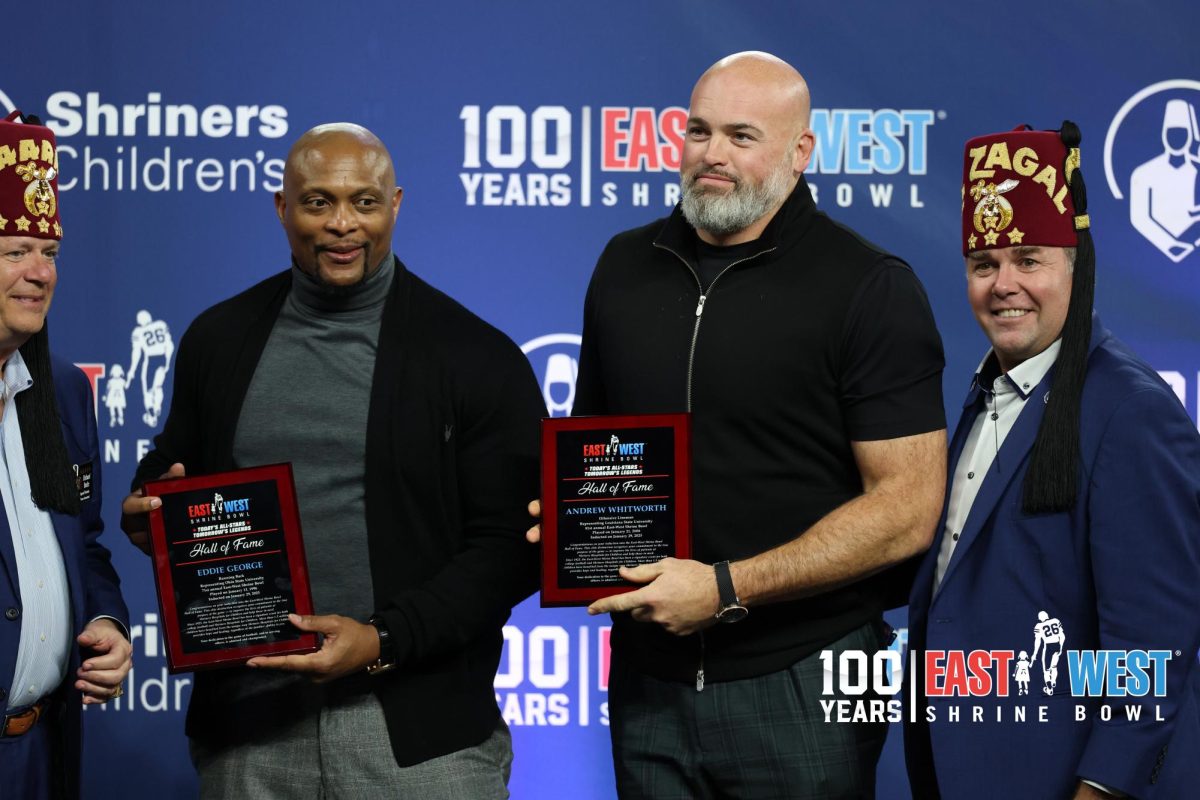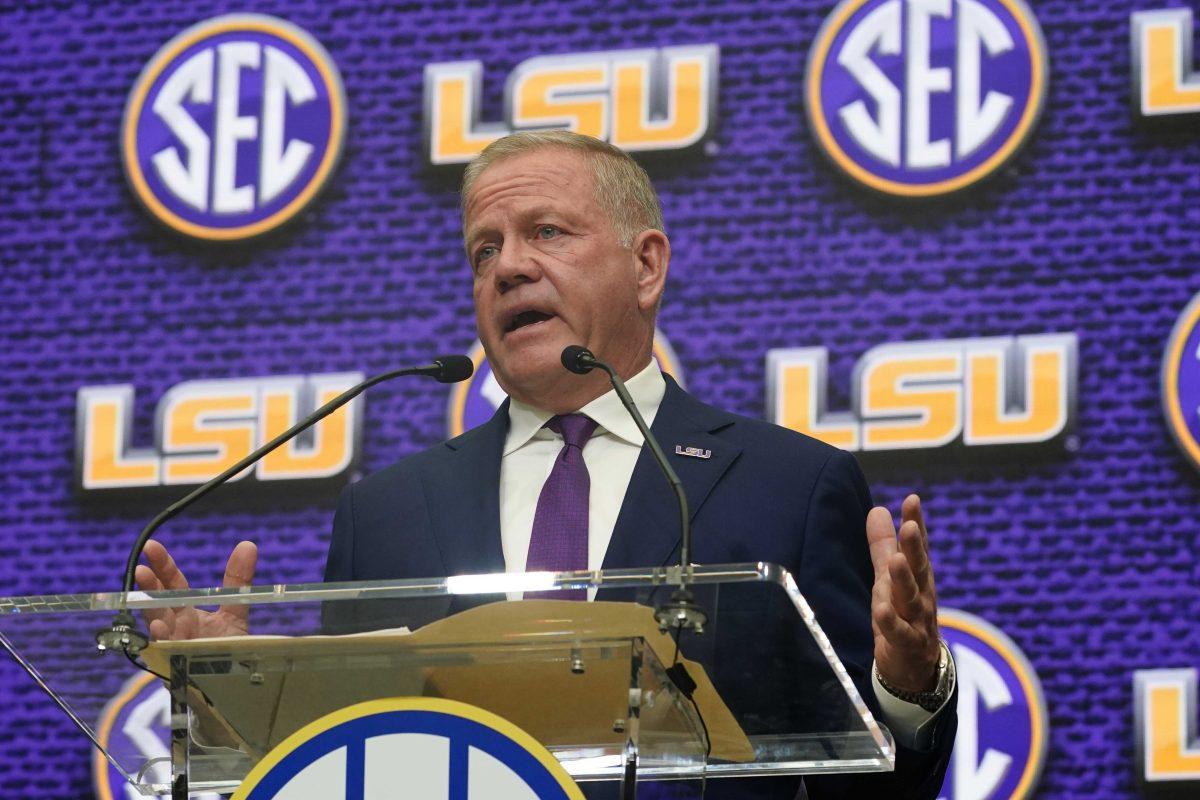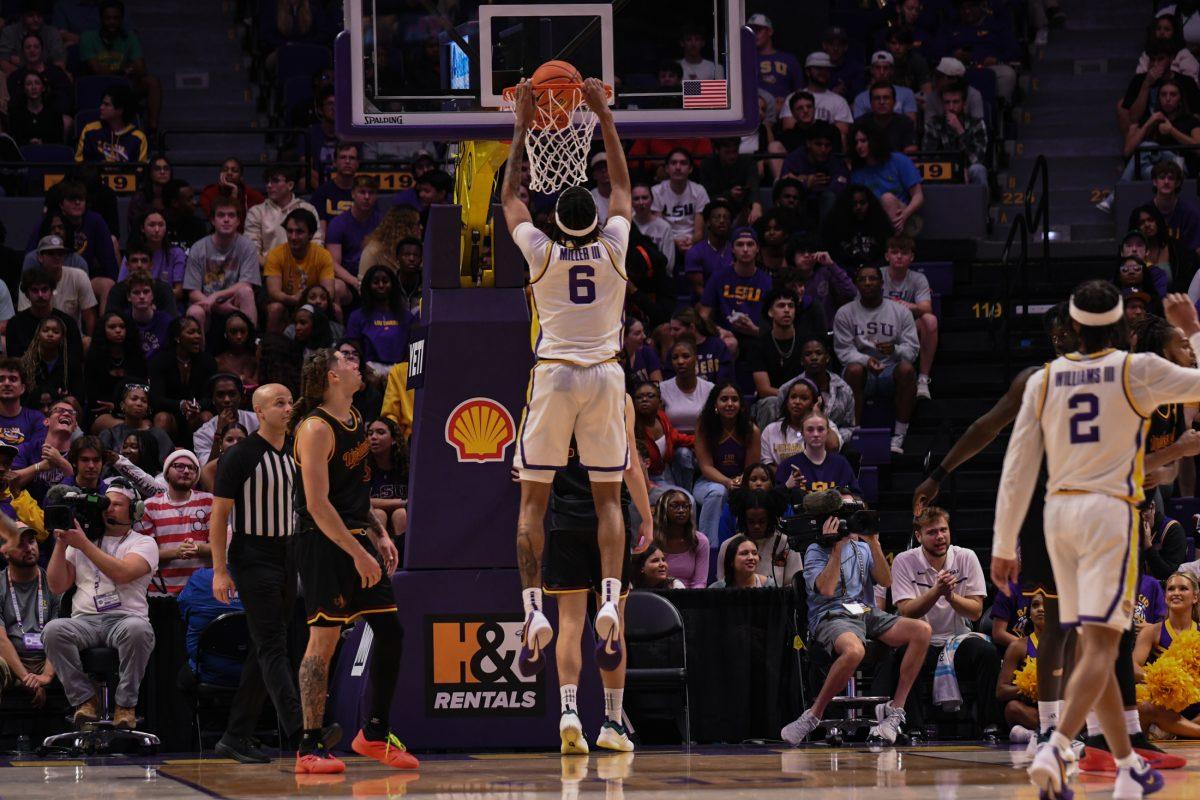It’s Sept. 16, 1995.
The Tigers are leading No. 5 Auburn, 12-6, in the fourth quarter, and Tiger Stadium is in a frenzy.
Redshirt sophomore defensive tackle Chuck Wiley looks back toward his linebackers to check for any changes in his assignment as Auburn’s offense lines up.
“It was almost like you were at a concert indoors, and there was no way for the sound to let out,” Wiley said. “You couldn’t hear anything. We had to give hand signals.”
Despite the necessary adjustment from his last coaching stop at Vanderbilt, first-year LSU coach Gerry DiNardo enjoyed the electric atmosphere with pride because his Tigers had succeeded in bringing the magic back to Death Valley.
Coming down to Baton Rouge in 1995, DiNardo had a plan to revive the winning tradition of an LSU program that hadn’t seen a winning season since 1988, and it all started with a simple request from the LSU fans — white jerseys at home.
“When I took the job, there was a lot of talk about the white jerseys,” DiNardo said. “It had been 16 years since they wore them. … It was kind of a tradition. Every time they changed coaches, they asked the new coach, ‘Hey, can you get us our white jerseys back?’ When I got the question, I said ‘Yes, I think I can.’”
As a member of the American Football Coaches Association’s Rules Committee, DiNardo was in perfect position to petition for LSU to be able to wear its white jerseys at home when the committee met in January 1995.
After it passed in the coaches’ committee, DiNardo moved on to the NCAA Rules Committee, which consists of officials, administrators and conference commissioners.
When Sports Information Director Herb Vincent, equipment manager Jeff Boss and DiNardo presented LSU’s case to NCAA Rules Committee, they came prepared with a gift for each committee member.
“We … made an LSU white jersey for everybody on the committee with their name on their back,” DiNardo said.
The combination of logic and bribery worked, and the committee approved the petition: The Tigers could wear white at Tiger Stadium.
Wiley said the players respected DiNardo for his ability to constantly keep in touch with the fans.
For DiNardo, a crucial part of becoming the new coach at an institution is figuring out what traditions are important to him and the program. DiNardo said he recognized how important the white jerseys were to his theme of “bringing back the magic.”
While the fans were ecstatic to see LSU take the field in white, the LSU Tigers themselves were hyped to play Auburn for an entirely different reason — revenge for their 1994 defeat.
A year before, LSU blew a 14-point lead in the fourth quarter when LSU then-quarterback Jamie Howard threw six
interceptions, including three pick sixes, in the final 13 minutes.
“We had just come off the year before from a huge loss to Auburn,” said then-senior flanker Sheddrick Wilson. “Luckily we got the opportunity to avenge our loss.”
Although the manner of the loss stung on its own, the LSU collapse cost it a winning season in 1994, continuing a long-standing trend that the LSU-Auburn game determines the success of the Tigers’ season.
From 1992-1994, LSU posted a collective 8-16 record after losing to Auburn each year. After beating Auburn in seven of the 10 seasons under Les Miles, LSU has recorded five 10-win-or-more seasons.
“I used to always tell the team, ‘That Auburn game always decides our season,’” Wiley said.
LSU got off to a fast start in 1995, and the players’ and coaches’ determination to turn the program around, combined with the atmosphere at Tiger Stadium, translated into an entirely different result.
And it changed the outlook of LSU football.
With four seconds remaining, Auburn threatened as then-Auburn quarterback Patrick Nix called out the play on a fourth-and-goal from LSU’s 11-yard line.
Seconds later, LSU defensive back Troy Twillie picked off Nix’s throw in the corner of the endzone to seal the LSU Tigers’ 12-6 upset of Auburn.
LSU’s 1995 win echoes in program history as the start of LSU’s rise to national prominence, and, ultimately, played a part in setting up Saturday’s clash of the Tigers.
“Before that, we were playing not to lose, and now these kids are actually playing to win to the game,” Wilson said. “It was our senior class that catapulted LSU into the national forefront, and the guys that came behind us stood over and ran with it.”
1995: Upset brings the magic back to Tiger Stadium
September 17, 2015
More to Discover







